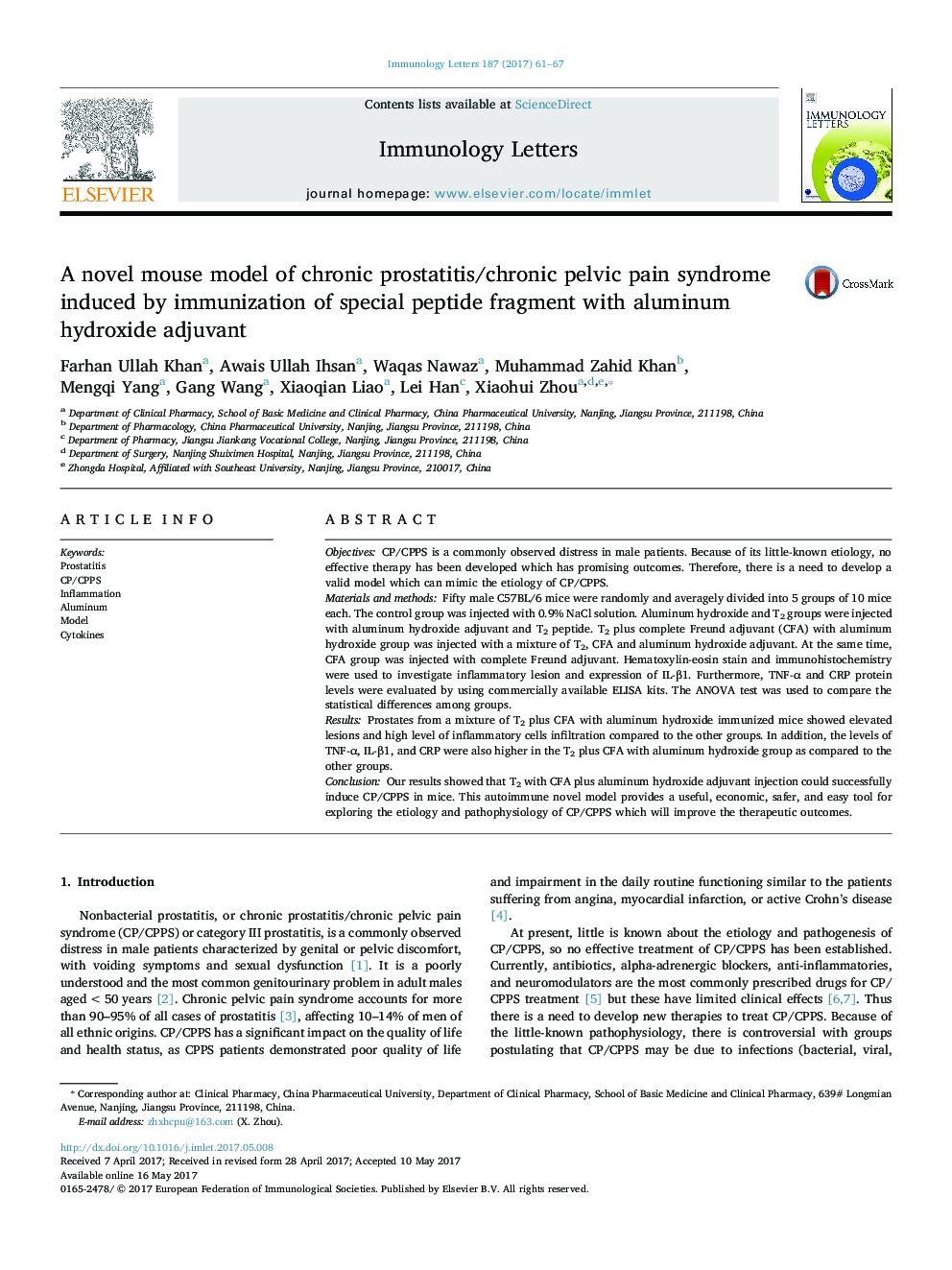| Article ID | Journal | Published Year | Pages | File Type |
|---|---|---|---|---|
| 5666599 | Immunology Letters | 2017 | 7 Pages |
â¢Establishment of new animal model with a novel peptide fragment is proposed.â¢It has shown that this new peptide fragment has better results than previously established models.â¢This novel animal model might help in better understanding of CPPS etiology and will leads to better treatment outcomes.
ObjectivesCP/CPPS is a commonly observed distress in male patients. Because of its little-known etiology, no effective therapy has been developed which has promising outcomes. Therefore, there is a need to develop a valid model which can mimic the etiology of CP/CPPS.Materials and methodsFifty male C57BL/6 mice were randomly and averagely divided into 5 groups of 10 mice each. The control group was injected with 0.9% NaCl solution. Aluminum hydroxide and T2 groups were injected with aluminum hydroxide adjuvant and T2 peptide. T2 plus complete Freund adjuvant (CFA) with aluminum hydroxide group was injected with a mixture of T2, CFA and aluminum hydroxide adjuvant. At the same time, CFA group was injected with complete Freund adjuvant. Hematoxylin-eosin stain and immunohistochemistry were used to investigate inflammatory lesion and expression of IL-β1. Furthermore, TNF-α and CRP protein levels were evaluated by using commercially available ELISA kits. The ANOVA test was used to compare the statistical differences among groups.ResultsProstates from a mixture of T2 plus CFA with aluminum hydroxide immunized mice showed elevated lesions and high level of inflammatory cells infiltration compared to the other groups. In addition, the levels of TNF-α, IL-β1, and CRP were also higher in the T2 plus CFA with aluminum hydroxide group as compared to the other groups.ConclusionOur results showed that T2 with CFA plus aluminum hydroxide adjuvant injection could successfully induce CP/CPPS in mice. This autoimmune novel model provides a useful, economic, safer, and easy tool for exploring the etiology and pathophysiology of CP/CPPS which will improve the therapeutic outcomes.
